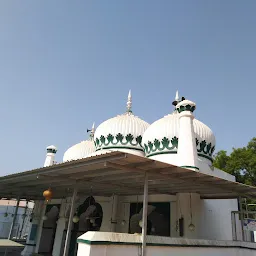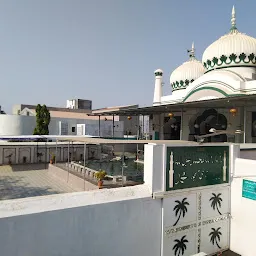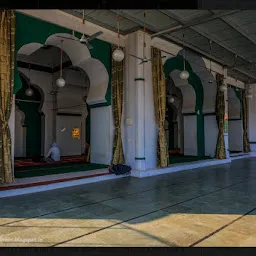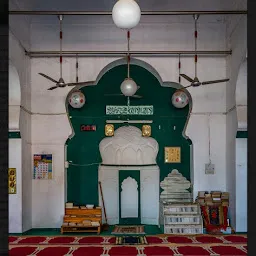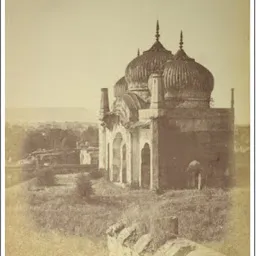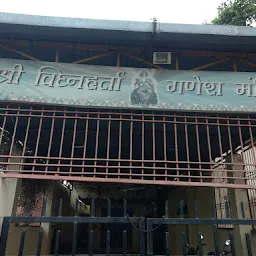Shahi Masjid (Alamgir Mosque) Aurangabad
Govt.College, Qila Arq, Aurangabad, Maharashtra 431004, IndiaShahi Masjid (Alamgir Mosque) Aurangabad is a mosque located in Aurangabad, Maharashtra. The average rating of this place is 4.90 out of 5 stars based on 123 reviews. The street address of this place is Govt.College, Qila Arq, Aurangabad, Maharashtra 431004, India. It is about 1.47 kilometers away from the Aurangabad railway station.
- Where is Shahi Masjid (Alamgir Mosque) Aurangabad located?
- Shahi Masjid (Alamgir Mosque) Aurangabad is located at Govt.College, Qila Arq, Aurangabad, Maharashtra 431004, India.
- What is the nearest railway station from Shahi Masjid (Alamgir Mosque) Aurangabad?
- Aurangabad railway station is the nearest railway station to Shahi Masjid (Alamgir Mosque) Aurangabad. It is nearly 1.47 kilometers away from it.
Ather Khan 58 months ago
Built by Aurangzeb one of the most calming places to be in
Shrinivas Deshmukh 58 months ago
This mosque was constructed by the Mughal emperor Aurangzeb. The word shahi masjid can be translated as the Royal masjid. It was built in the year 1693 and it's a part of royal complex called 'Kila-e-ark'. There is a stone seat located inside it , on which, according to the legend, was used by Aurangzeb to write copies of holy Quran. Astonishingly, a very few people know about it and concerned about its conservation .
If you are in aurangabad, do visit this place , preferably in the evening. It opens by 1 PM
Abdul Qawi Qureshi 58 months ago
Built by aurangzeb only of its kind in India i.e design of 3 domes other one was babri masjid which can not be counted now,
The Alamgir Masjid of Aurangabad in the Indian state of Maharashtra, also known as the Shahi Masjid (Royal Mosque), is the personal mosque of Mughal Emperor Aurangzeb. Surprisingly not many people seem to be aware of this, even though this is one of the most important Mughal era monuments of the city. My friends in a popular Aurangabad radio station didn’t know about and neither did my chauffeur Anand who had lived in the city all his life. The only reason I found the mosque was because I was looking for it, because I had read about it in Pushkar Sohoni’s book.
In the winter of 1618, Mughal Emperor Jahangir was making his way back to Agra from Gujarat after putting down Malik Ambar’s attempt to revive the Ahmadnagar kingship. In his train was Prince Khurram, who would later ascend the throne as Emperor Shah Jahan. Accompanying Prince Khurram was his wife, Arjumand Banu Begum who would later come to be known as Mumtaz Mahal. She was then heavily pregnant, and on the night preceding Sunday, 24th October (or the night of 15th Ziqada by the Hijri calendar), a boy was born while the royal procession had halted at the little village of Dohad. The boy was christened Abul Muzaffar Muhi-ud-Din Muhammad Aurangzeb. A keen and intelligent child, he would master the Qur’an at an early age and his fame spread far and wide when as a child of only fourteen, he fearlessly faced down a fighting elephant. At sixteen, he would lead the Mughal army as supreme commander against the rebellious Bundelkhand chief, Jhujar Singh. When the rebellion had finally been put down and Bundelkhand and Golkonda subdued, Aurangzeb would be made Viceroy of the Deccan on the 14th of July, 1636. He chose as his capital, the little village of Khadki, near the fort of Daulatabad. Khadki had been substantially developed under the leadership of Malik Ambar. Under her new master, she rapidly grew in size and splendour and came to be known as Aurangabad – the city of Aurangzeb. When he eventually killed his brothers Murad Baksh and Dara Shikoh, chased a third brother Shah Shuja out of the country and confined his father to the Fort of Agra to ascend the Mughal throne on the 6th of June, 1659, he would take the name Alamgir, meaning “world seizer”.
- Address
- Govt.College, Qila Arq, Aurangabad, Maharashtra 431004, India

